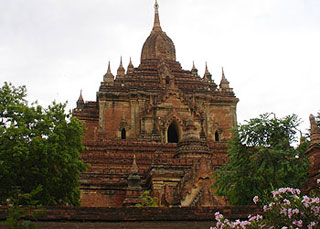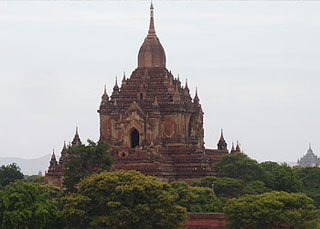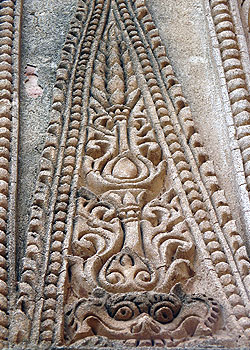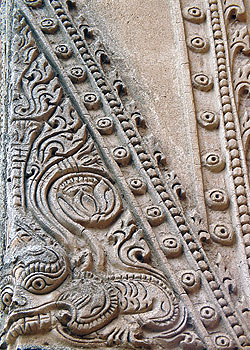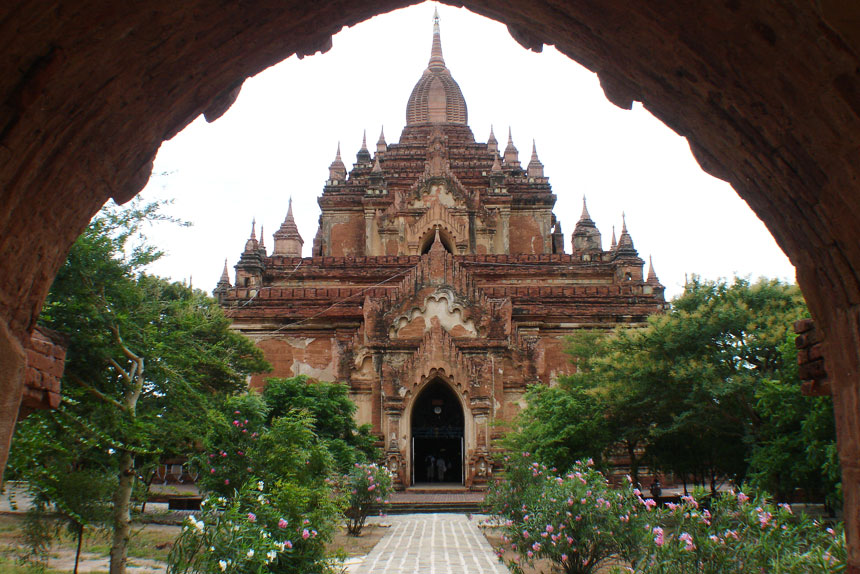Htilominlo Temple is situated in Nyaung U and Wetkyi-In Region of Bagan. The temple is about 1.5 km northeast of Bagan. This large temple was built by King Nantaungmya in 1218. The temple is known to be the last Myanmar Style temple built in Bagan. The name is a misreading of the Pali word for ‘Blessings of the Three Worlds’.
History
King Nantaungmya erected the temple on this spot because it was here that he was chosen. from among five brothers. to be the crown prince. Nantaungmya was King Narapati Sithu’s son. The selection of the heir to the throne had a tradition. which was to erect a white umbrella and the future ruler would be chosen when the white umbrella tilts in his position. After the event. it was decided by the state policy’s council.
Inside the 46-metre-high temple. which is similar in design to Sulamani Temple. there are four Buddhas on the lower and upper floors. Traces of old murals are also still visible. Fragments of the original fine plaster carvings and glazed sandstone decorations have survived on the outside. The doorways feature nice carved reliefs. Several old horoscopes. painted to protect the building from damage can be found on the walls of the temple. They have no iron or wooden beam to buttress. They were built of bricks and cement only. Glazed sandstone tiles of green and yellow color decorated the structure. They reflect brilliantly in the sunlight. Glazed sandstone tiles are rare decorative artwork. Glazing requires very high temperature. High temperature can cause crack to sandstone tiles. Only skilled technicians could produce such decorative pieces.
As in the other monuments. plastic moldings found at this pagoda are of no mean quality. A few words may be said about its architecture. The devotional halls have double tiered spans. with hollow-outs between them. Under the pole plates are stone bars to support the pole plates. Sandstones were used at the right angles of the building. In the walls in which bricks were laid vertically. sandstones were inserted at equal intervals for strengthening and longer durability. On the ceilings of the circumambulating vaulted corridors are found original paintings. ink inscriptions and the horoscopes of certain personages.
Nearby Attractions
UPALI THEIN
The Upali Thein has a long central nave with a ridge roof and a pair of side aisles with lean-to roofs. Inside. there is an image of the Buddha placed on a pedestal near the western end.
More>>